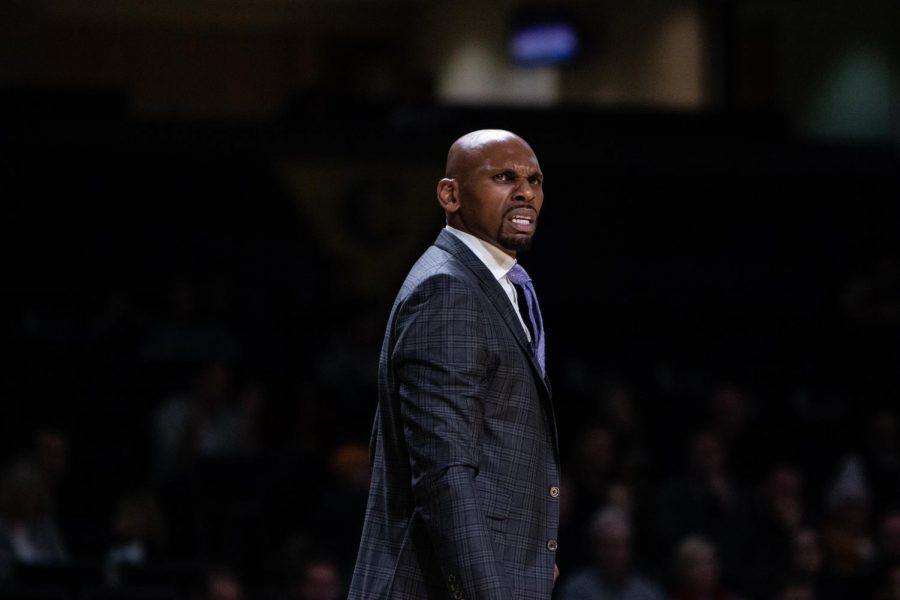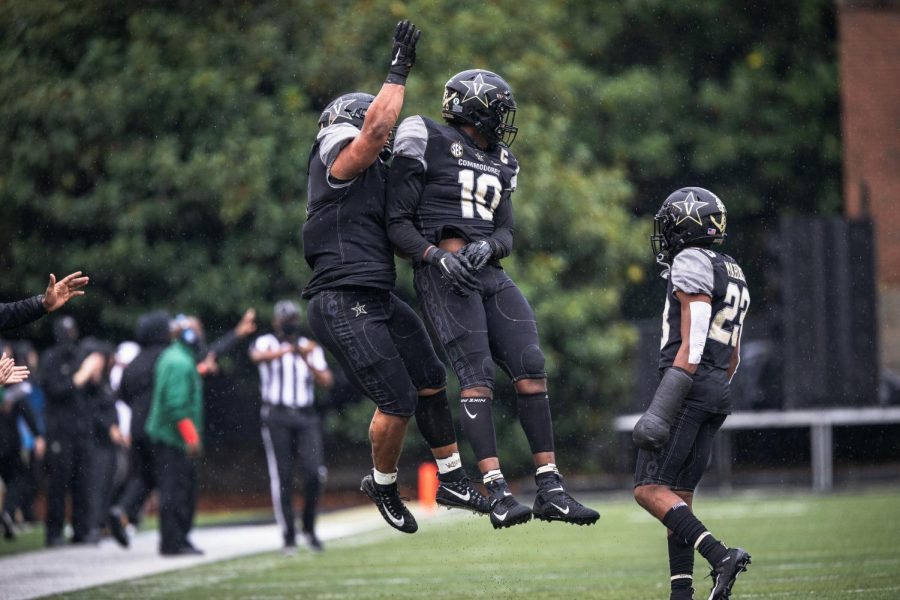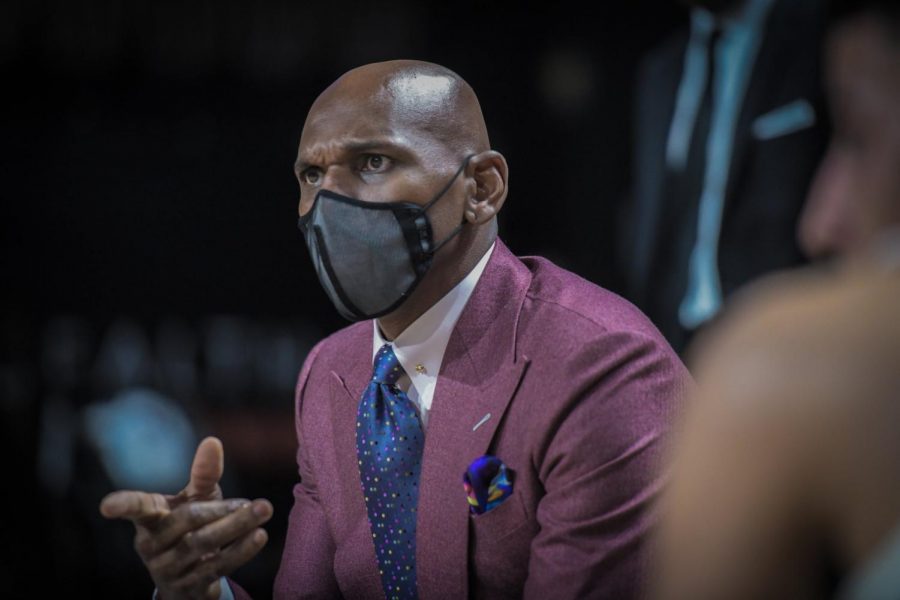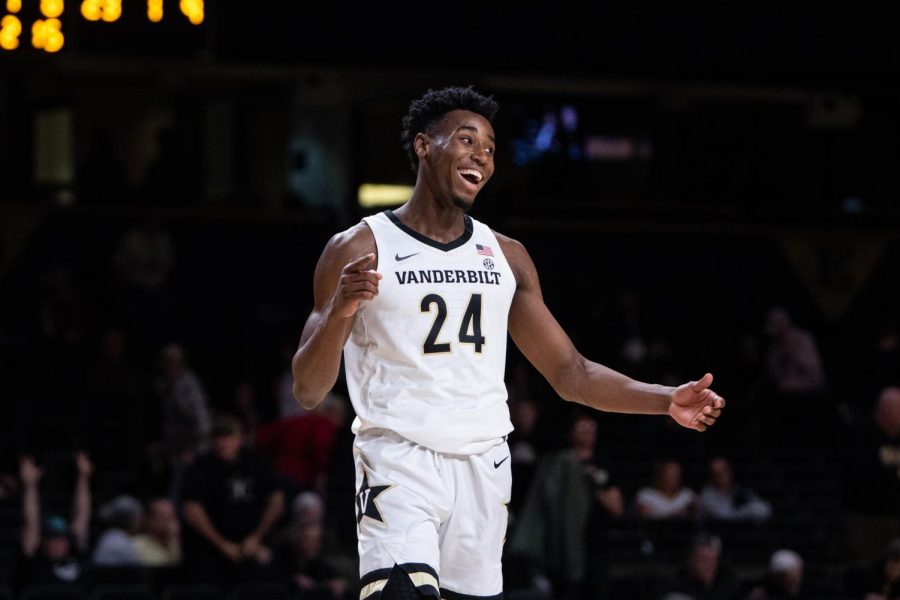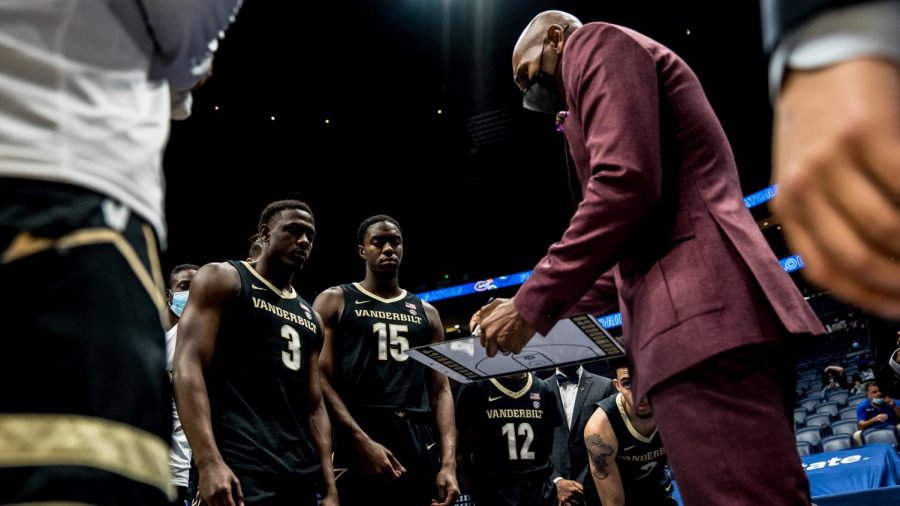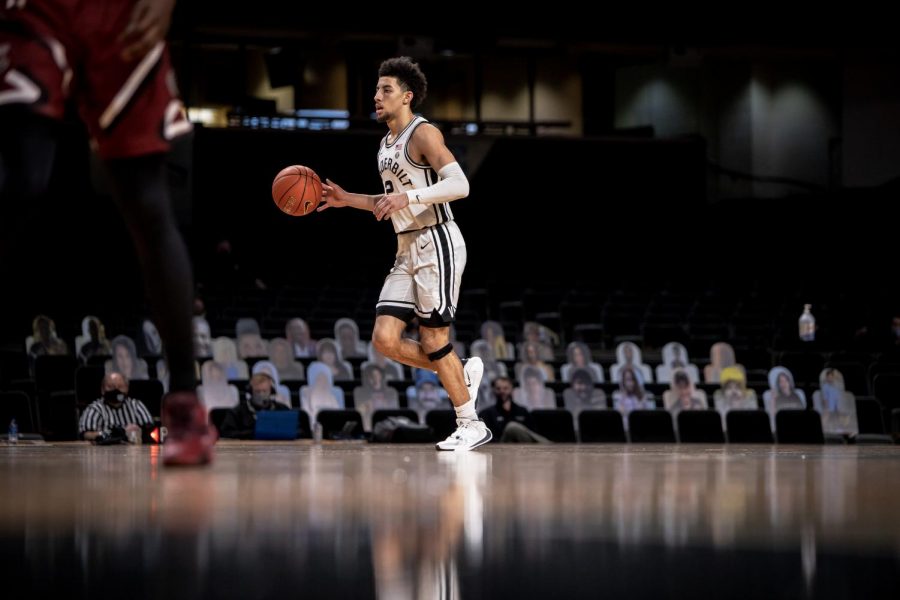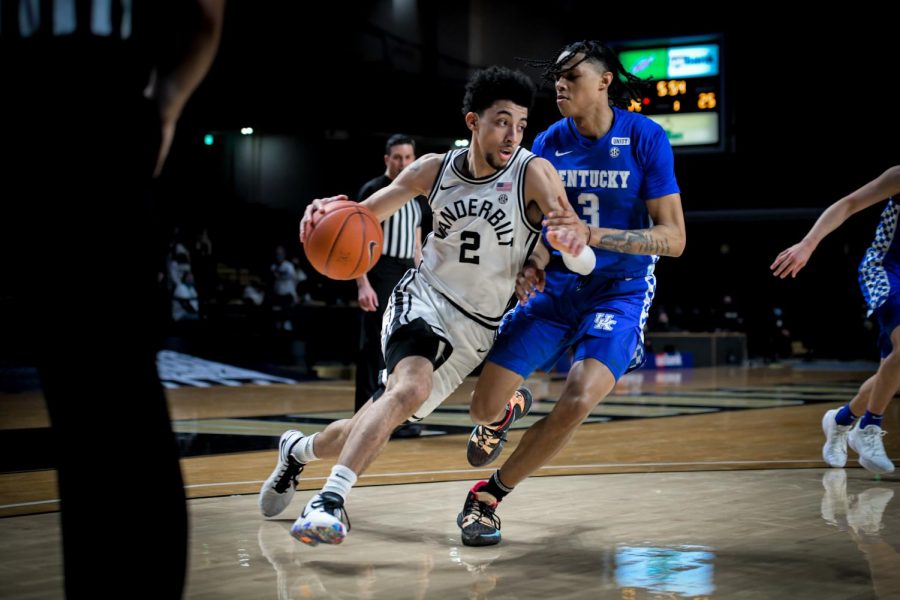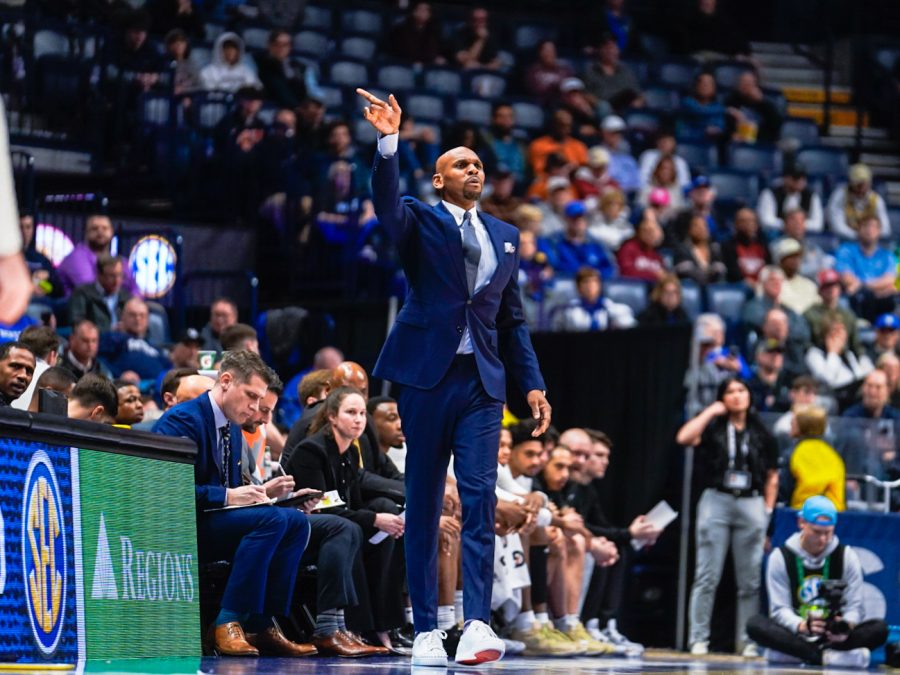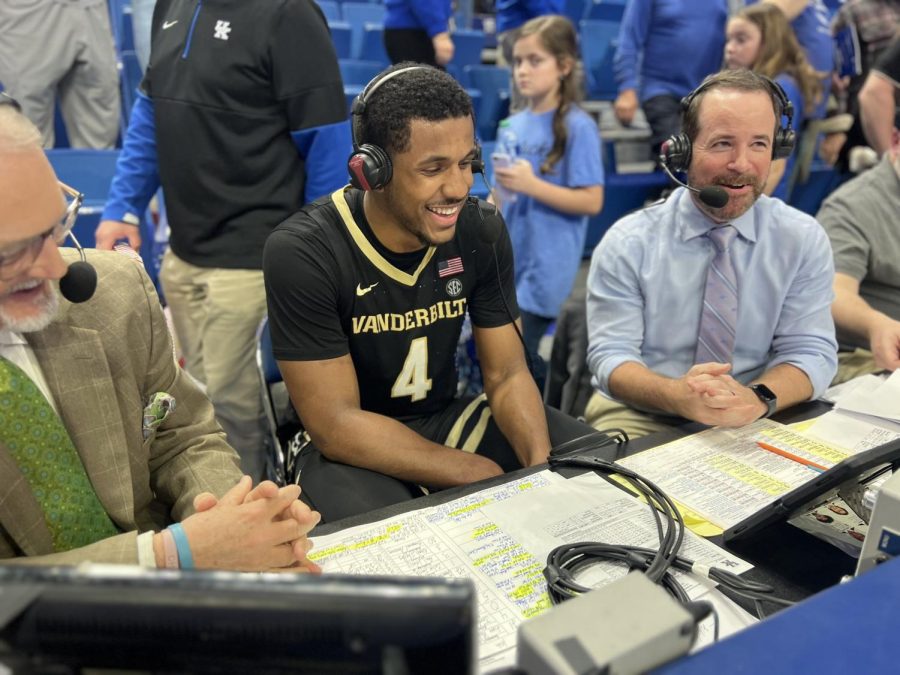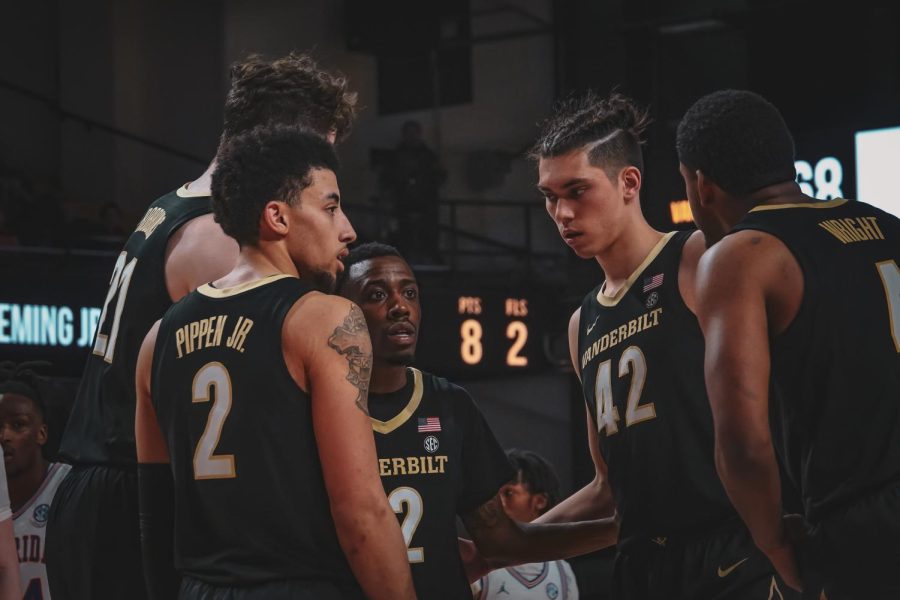In his debut season, Coach Jerry Stackhouse and his Vanderbilt Commodores got off to a solid start. In the team’s first nine games, they went 6-3 and played entertaining basketball, while showing signs of improvement from last year’s group. With an NBA-style offense, an aggressive defensive scheme and several impactful recruits, Stackhouse quickly made his mark on the program and was in a prime position to help Commodore fans forget about last season’s debacle.
In the eight games since, disaster struck for Stackhouse and the Commodores, as two major injuries rocked the team. The next few games are crucial for Stackhouse, and we will get to see how he responds to his first major crisis as Vanderbilt’s head coach.
Since Dec. 14, Vanderbilt has played without starting forward Clevon Brown due to an undisclosed knee injury. As the team’s best rim protector, Brown was crucial to its early season success, but the Commodores began reeling without him. The team initially struggled to a 2-2 record in his absence, but after a close 79-83 loss to then No. 4 Auburn, it seemed like Stackhouse had found the roster’s best lineups and figured out how to play without Brown.
Unfortunately, just a day after almost upsetting Auburn, Vanderbilt fans were hit with devastating news. Starting forward Aaron Nesmith – the team’s best player and the most proficient three-point shooter in the nation – had suffered a stress fracture in his foot and would likely be out for the year. After just fourteen games as head coach, Stackhouse would now have to coach a team without its rim protector and its main offensive weapon.
In the three games since Nesmith’s injury, the results have been dire. Playing against Texas A&M, Arkansas and Tennessee, the team has been outscored a combined 150-208. The team’s defense has been below average, but the offense has been significantly worse. The Commodores have failed to score more than 55 points, averaging 50points per game and shooting 30.8 percent from the field without Nesmith.
Vanderbilt’s struggles reached their peak against rival Tennessee on Saturday afternoon. The Commodores only scored 45points, and they failed to convert a single three-pointer on 25attempts, breaking the team’s historic streak of 1,080 consecutive games hitting at least one. Overall, the offense looked completely out-of-sync, as the Commodores moved the ball passively around the three point line but failed to find good looks at the basket. No player was able to get comfortable on the offensive end, and, regardless of who was on the floor, Stackhouse’s system was unsuccessful against Tennessee’s pressing defense.
The road ahead will be just as challenging for Vanderbilt. There are 14 conference games left on the schedule, and the Commodores play the top-three teams in the SEC in the next three weeks. If Stackhouse wants to avoid the fate of last year’s team, improvements must happen soon.
Stackhouse’s offensive game plan emphasizes spreading the floor out and shooting as many three pointers as possible. But without Nesmith, opposing defenses have packed the paint and allowed Vanderbilt to launch from beyond the arc, as the team has no dangerous threats from deep. To counter this, Stackhouse should look for ways to get the team better looks inside the paint, but that will be difficult considering Vanderbilt is one of the smallest teams in the SEC.
Stackhouse has struggled to get the team better looks without Nesmith,
“Other than Saben [Lee] and Scotty [Pippen Jr.], we don’t have a lot of bonafide scorers,” Stackhouse said in a press conference after the team’s loss to Tennessee. “So it takes ball movement and screens and getting them the looks that they need to have success.”
At the same time, Vanderbilt’s lack of rotation players compared to its opponents has been noticeable in the last few games. Unless Brown and Nesmith come back, this issue will persist and Stackhouse’s job will be even more complicated. The team will have to play to its strengths and should try to find an identity that will maximize the available players on the roster.
“We’re trying to figure out some things that we can do that best suits the personnel that we have now,” Stackhouse said.
He also mentioned how several players, including big man Oton Jankovic and guards Braelee Albert and Jordan Wright, have been thrown into increased roles they did not expect to see at the beginning of the year. The coaching staff will certainly have its hands full in the next few weeks as they try to find ways to better incorporate these players.
The unfortunate reality is that there are no major changes that Stackhouse can make that would significantly alter the team’s trajectory. Losing arguably your team’s two most important players is absolutely devastating for any program and will likely prove too difficult to come back from.
Stackhouse has been given an extremely complex mission in his first year on the job. After inheriting a roster that went 0-18 in the SEC, he now has to lead them without their most important defender and their best offensive player. In his first real test as coach of the Commodores, he is facing a daunting challenge that no other coach in the conference is.
Before ending his press conference, he reminded the media that he went from a Final Four team at North Carolina to an NBA roster that won just 18 games in his rookie season. He emphasized that with so many players moving in and out of the locker room and the rotation, it was foolish to expect predominantly positive results.
If Vanderbilt’s current season echoes Stackhouse’s first NBA one, it could be a long and winding road back to success.


